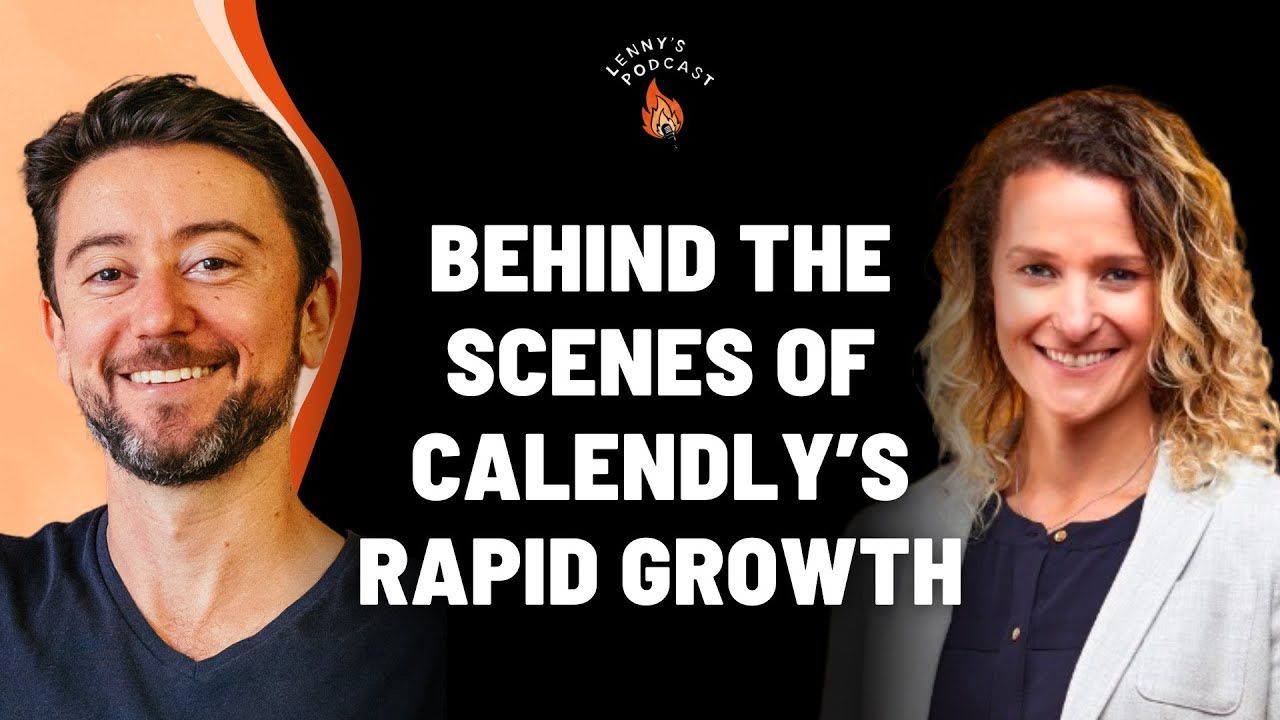Lenny Rachitsky’s Podcast – Annie Pearl: Calendly’s rapid growth

Annie Pearl is the Chief Product Officer at Calendly. Previously, she was Chief Product Officer at Glassdoor, as well as Director of Product Management at Box. She was named one of the most influential women in Bay Area business by the San Francisco Business Times.
Annie shares three paths into product management and advice on how to get your foot in the door. She also gives us an inside look at how Calendly’s product teams are structured, how they transitioned from solely PLG to adding a sales team and unlocking new growth levers, how they do planning, and much more.
Calendly’s success story
A solid product strategy should address crucial factors like target markets, audience segments, and ways to win.
Example: Make sending Calendly invites less awkward by asking for availability first and adding available times in the email.
Calendly’s team structure, which includes product managers and designers, solves problems in a holistic way, resulting in better outcomes for customers. They also use OKRs to focus on priorities at all levels.
I think one of the things that makes Calendly so scalable is that it’s a very modular product. You can use it for different types of meetings, different types of workflows, different types of integrations.
Goal alignment
Clearly defining goals and aligning them across an organization from top to bottom is crucial for success. Focus on narrow target markets and personas to deliver the most value to core users and build something amazing.
Transitioning to sales-led growth requires a cultural shift that involves people, processes, and the product itself. Sales team members should have a grower profile for inbound leads, and PQLs are key to identifying potential customers. The viral loop is an effective way to achieve growth.
Identifying the market gap
Calendly’s CEO identified a market gap and leveraged his sales experience to create a user-friendly scheduling solution. The early growth was driven by a viral loop and free product offering, fueled by word-of-mouth recommendations.
Calendly’s focus has shifted towards catering to teams and multi-departmental deployments, leading to their growth and success as a scheduling tool. This has been driven by customer demand driving hundreds of millions of dollars in revenue.
Becoming a product manager
There are multiple paths to becoming a product manager, including joining an APM (Associate Product Manager) program, applying for a junior PM role, finding a mentor within the company, or joining an SME (subject matter expert) program. It requires effort and dedication, regardless of the chosen path.
Companies need to invest time and resources in creating a clear APM program, including the interview process, role expectations, and training. A successful APM program can provide a clear path for employees to become successful product managers.
Building values
Calendly’s culture values focus on its target market and user, improving product quality. They use competitive work games and templates to reinforce this mindset, empowering every product manager to stay on top of market trends.
Calendly is shifting its focus to specific teams and users to solve problems in a scalable way.
For instance, Calendly got its first 2,000 users through a combination of word-of-mouth and a free product offering.
A cultural shift
Transitioning to sales-led growth requires a cultural shift that involves people, processes, and the product itself. Sales team members should have a grower profile for inbound leads, and PQLs are key to identifying potential customers. The viral loop is an effective way to achieve growth.
Building a sales team requires considering their fit for the target buyer, department head, or CIO. A strong relationship with sales benefits by providing customer insights and balancing requests from founders, sales and product issues.
Calendly is a product that helps people schedule meetings without the back and forth.

